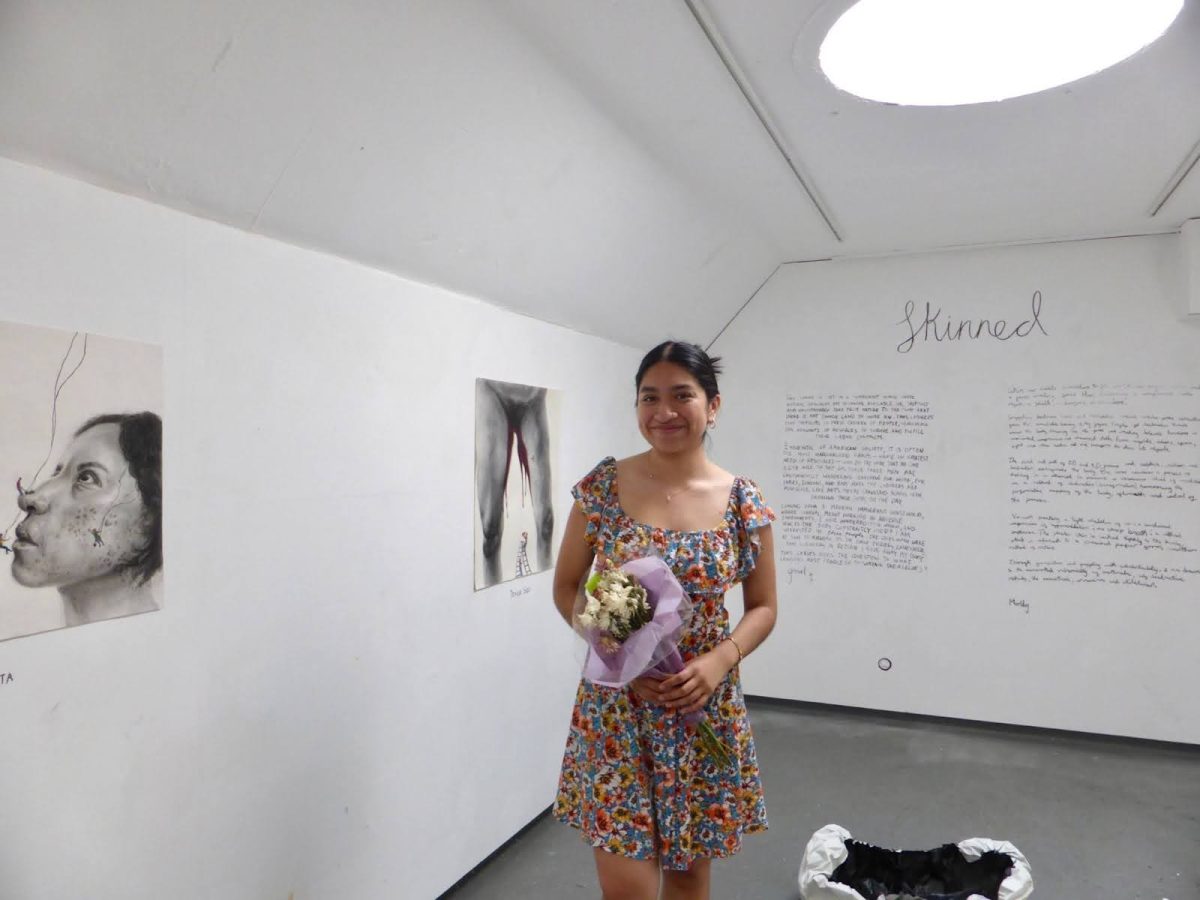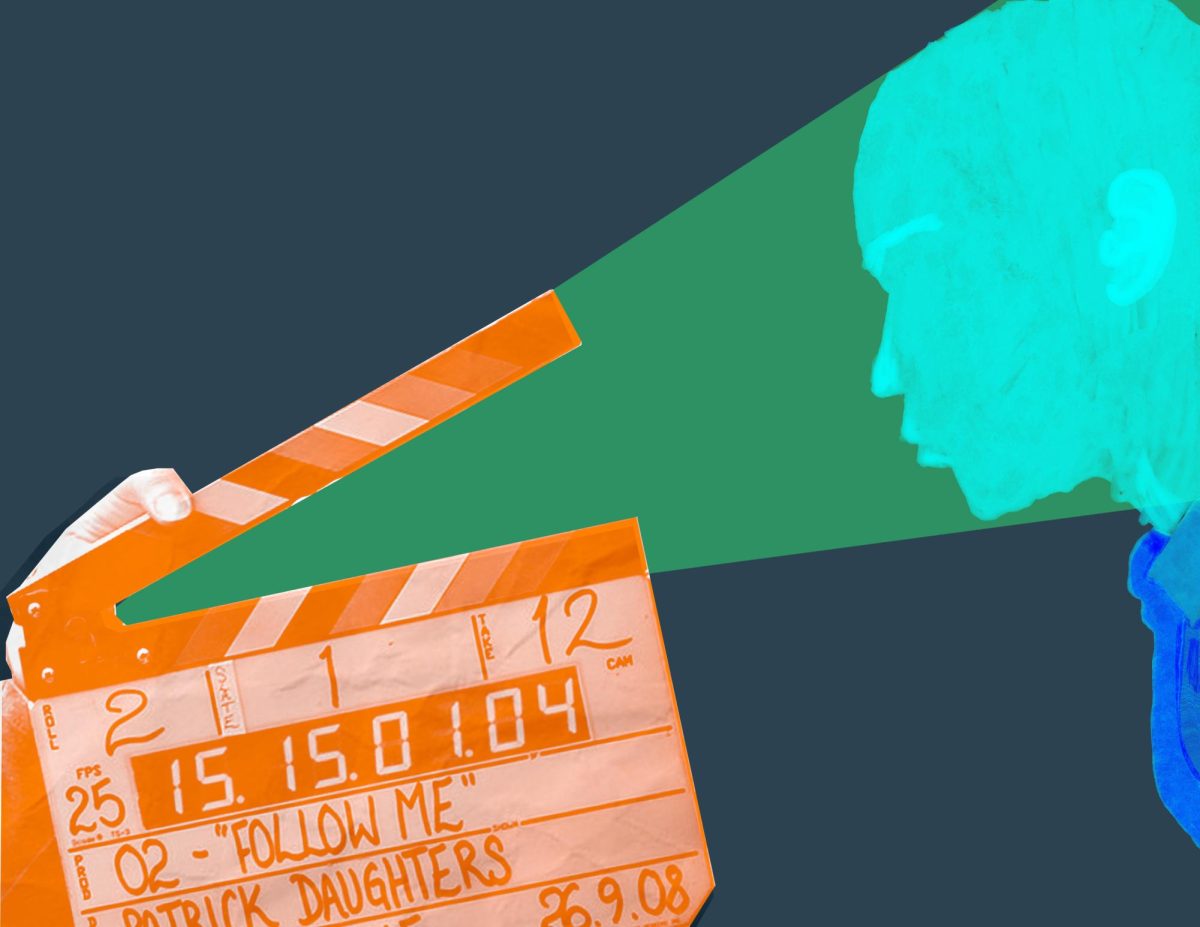“In a time when Earth is no longer habitable, a band of humans attempt to colonize Planet 85K: Aurora.”
This is how the description for Star Choir, Phase 1: Dialogue begins. “A performance for six voices, six instruments, and animated video scenography, Star Choir explores a world occupied by an intelligence invisible to humans,” it continues.
On Nov. 15, Pamela Gay, Saumel Delaney and Anjuli Fatima Raza Kolb discussed interdisciplinary artists Malik Gaines and Alexandra Segade’s sci-fi opera, Star Choir, Phase 1: Dialogue. The webinar began with a short five minute sample of the opera performance. There is humor in the contrast between the otherworldly, futurist lyrics and the traditional singing style. The libretto – an Italian word for the text of the opera piece – was the main object for discussion between the panelists. The libretto tells a story narrated by an alien presence, observing humans attempting to colonize a new world after they have ruined Earth. A colorful light show, reminiscent of the ’80s with various electronic elements throughout, completes a musical performance that is both unforgettable and filled with joyful exploration. Science and art come together in a piece that contemplates themes of space travel, colonization, lives of stars and their relations to our own expressions of the human experience.
The discussion began with Gay, who works at the Planetary Science Institute and is best known for her astronomy podcasting and making space accessible to general, non-scientific audiences. She described how it takes art to see the beauty in science, and that it is fun to “anthropomorphize anything … stars have lives, galaxies can beat each other up.”
The lives of stars, and life in the galaxy, she says, is something that no one has really understood, and should truly be an object of philosophy and the arts. Could there be life on Venus, as a recent report has hinted? Maybe, she says, maybe not. Several planets in our solar system show biological signatures, and there were so many collisions at one point in time between Earth, Mars and Venus that there are countless possibilities.
Toward the end, she contemplates the relationships between capitalism and science, and states that we are “ruining our science by improving our society.” In exploring the greater universe, where does the dollar end? The tension between monetary incentives and scientific discovery runs throughout the talk, with no clear answers in sight.
As a prolific science fiction writer inducted into the Science Fiction Hall of Fame, Delaney insightfully critiqued the libretto of the performance, encouraging the writers to give more description of where the explorers are. As a writer, he believed that the narrative got lost in the lofty notes of the opera singers, and believed that a more descriptive approach to describing new worlds and galaxies would have been more successful. Gaines and Segades’ took the critique in stride, of course, and Delaney’s enthusiasm kept the talk entertaining and engaging throughout.
Raza Kolb, who used to teach at the College and is now an associate professor of English at University of Toronto, brought her expertise in postcolonialism and indigenous studies to ponder big questions. Can exploration be anything but imperial? Is indigeneity important when we think of other planets? She gave great praise to the libretto, emphasizing that “the colonizers became the colonized.”
She also discussed the themes of biblical elements in the libretto, citing the Book of Exodus and encouraging an exploration of such texts in the artists’ future works. In these future colonies, she asks, how can we think of heteronormative reproductive futures? Kolb pointed out that the panel was a majority of queer speakers, how could they bring their perspectives to this? No clear answers were given, but the question definitely introduced nuance to the viewer’s ideas of planetary colonization. Star Choir, Phase 1: Dialogue brings experts from different fields to view the intersection of science and art in a multidisciplinary approach that, in turn, becomes the art itself. I would implore anyone interested in the world beyond our own to tune in to Phases 2: Process and Phase 3: Performance, coming early next year, to witness a joyful contemplation of life, stars and our own futures.







